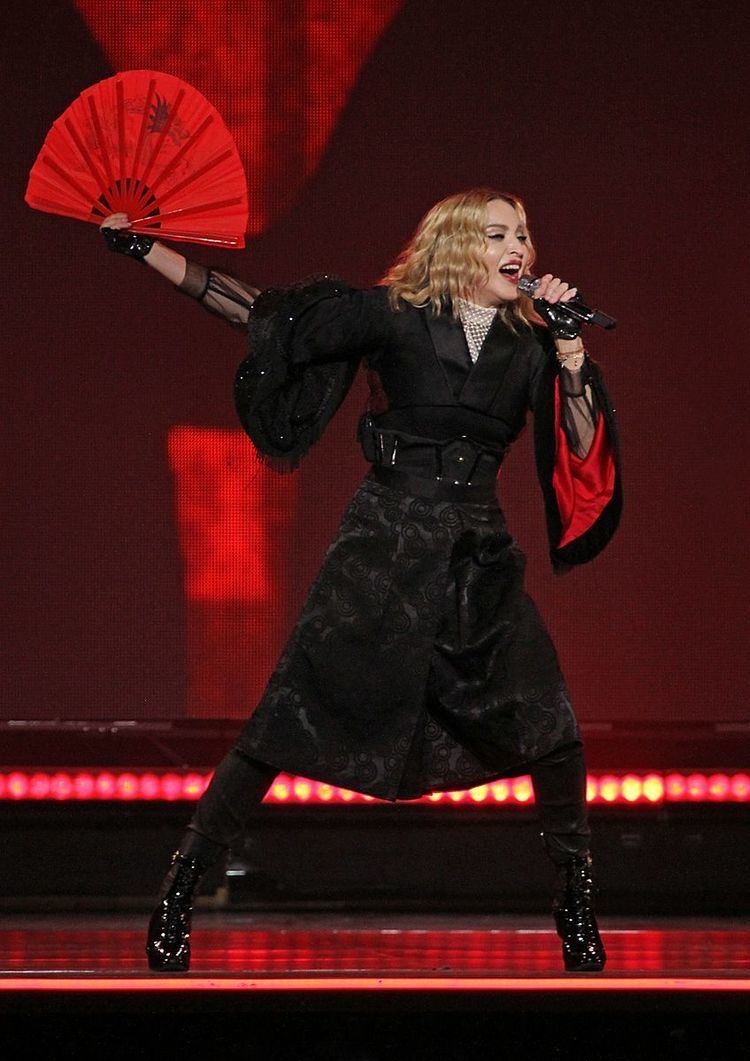Live albums 10 Video albums 2 Singles 5 | Compilation albums 4 Music videos 69 Box sets 2 | |
 | ||
American entertainer Madonna has released 69 music videos, 10 concert tour videos, 4 music video compilations, 5 music video singles, 2 documentaries, 2 box sets, and 4 promotional videos. In 1982, Madonna signed a recording contract with Sire Records and released her first two singles before launching her eponymous debut album. Her first video to receive attention on MTV was "Borderline" which was followed by "Lucky Star". Together with the 1984 video for "Like a Virgin", Madonna's image and fashion became popular. With the "title track" from her third studio album True Blue (1986), Madonna's impact on MTV and popular music was established when a contest entitled Making My Video, was held to create a music video for the song. "La Isla Bonita" and "Who's That Girl", both released in 1987, showed Madonna's fascination with Hispanic culture and religious symbolism. In 1989, Madonna signed a $5 million deal with Pepsi to use her song "Like a Prayer" in one of their commercial advertisements. The video portrayed her dancing in front of burning crosses, receiving stigmata, kissing a black saint and having sex with him in a church altar. It faced strong reaction from religious groups and media. "Express Yourself" released the same year was critically appreciated for its positive feminist themes.
In 1990, Madonna released the video for the song "Vogue", showing the underground gay subculture dance routine called voguing, and the glamorous look of golden era Hollywood. Her subsequent releases all explored sexuality in them, including "Justify My Love" (1990) and "Erotica" (1992). Madonna faced backlash for the overtly sexual undertones portrayed in them. A toned down image of the singer appeared in the video for "Secret", lead single from her sixth studio album, Bedtime Stories (1994). "Bedtime Story", from the same album, showed a dream sequence, inspired by paintings of Frida Kahlo and Remedios Varo, while incorporating new age surrealistic images. In 1998, Madonna released her seventh studio album, Ray of Light. The music video for the lead single, "Frozen", ushered in a new image for her with the incorporation of Indian influences. The video for the title track was a high-speed one, portraying Japanese people going through their daily lives, interspersed with Madonna in black denim dancing to the music. Her incorporation of Asian culture continued with the video of "Nothing Really Matters" (1999) where she appeared as a geisha.
In 2000, Madonna released her eighth studio album, Music. The video for the title track featured her in the role of a glamorous cowgirl-cum-pimp. Violence and vandalism were the themes of subsequent few releases, "What It Feels Like for a Girl" (2001), "Die Another Day" (2002) and "American Life" (2003), the latter being pulled from release due to the Iraq war of 2003. "Hung Up", lead single from Confessions on a Dance Floor (2005) was a tribute to John Travolta and his movies. "4 Minutes", the lead single from Hard Candy (2008), portrayed her as a superhero tackling physical obstacles. Madonna's recent videos for "Celebration" (2009) and "Girl Gone Wild" (2012) were received favorably for paying homage to her past videos and a return to her dance roots.
Madonna's music videos are considered by critics as works of art. They have depicted controversial subjects such as teen pregnancy, racism, religion, sex, and violence. In their book, The Madonna Companion, authors Allen Metz and Carol Benson explained that more than any other pop star, Madonna had used MTV and music videos to establish her popularity and to enhance her recorded work. Madonna has been honored with 20 MTV Video Music Awards—the second most for any artist—including the lifetime achievement "Video Vanguard Award" in 1986. In 2003, MTV named her "The Greatest Music Video Star Ever" and said that "Madonna's innovation, creativity and contribution to the music video art form is what won her the award."
